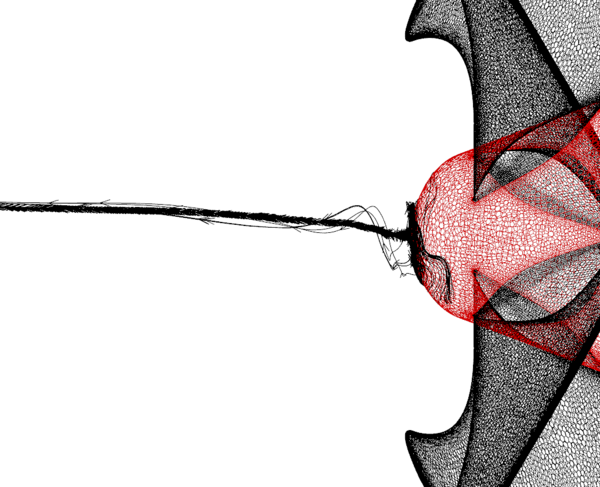With the recent advent of high-end computing power, computational fluid dynamics (CFD) has become an indispensable tool in the marine industry for selecting the right propulsion units and optimizing the design and the performance of the propulsors. Beyond predicting performance parameters, a detailed flow pattern study enables designers to better design products to avoid undesirable flow features, such as separation on the housing, which, in addition to increased drag, can also subject the propeller to significant non-uniform inflow.
Ship-scale CFD is now gaining traction in a much broader way when it comes to propulsion solutions – from the predesign stage to final tailoring of the unit’s propeller blades. These state-of-the-art computational tools have greatly extended our design capabilities at Steerprop, enabling our designers to offer our customers tailor-made solutions that perfectly match the customers’ needs and their vessels’ operational profile.
Below are just some of the ways that ship-scale CFD is bringing new benefits to vessel designers, shipowners and system integrators.

Choice of propulsors: When shipowners select the right propulsion units for their vessels, the decision is still primarily based on comparative performance using model scale tests.
With a greater shift towards using azimuth propulsors in modern ships, however, unit performance is significantly affected by scale effects. The reliability of traditional empirical methods in scaling the performance of these units, especially ducted ones and podded propulsors, is still a great concern. Therefore, there is a need to supplement model scale tests with CFD tools to accurately predict the performance of the azimuth propulsor.
Shape your housing: An optimized gear housing is essential from the perspective of overall azimuth propulsor unit performance. CFD, coupled with 3D modeling tools, has enabled us to carry out detailed investigations by defining and optimizing the housing in terms of geometrical parameters, like housing length, torpedo diameter, strut distance from propellers and more. A better understanding of their individual and combined effects through interaction on overall propulsor performance has enabled designers at Steerprop to better design our units, even in off-design and steering conditions.
With developed accuracy and confidence in modern computational tools, we can focus on optimizing the housing and thus our units at ship scale, rather than defining the unit’s performance with less accurate model tests.
Design your propeller for actual flow conditions: In times when there are conflicting design requirements for minimum-to-no-cavitation, low-noise and high-efficiency propeller units, it becomes more essential for designers to ensure that the inflow conditions are properly captured and described.
Traditionally, the design of propeller blades considers the nominal wake data obtained from model tests and couples it with not-so-reliable empirical extrapolation schemes. Today, computational tools, like BEM-RANS coupling, further improve the design process by making ship-scale effective wake available.
This has greatly improved our ability to predict behind-the-ship cavitation performance and thus avoid overly conservative designs.
A sea of new opportunities
The integration of these tools in our daily design process, with the level of detail in their prediction, is limited only by computing power. Additionally, the growing availability of on-board monitoring data on modern vessels will further extend the reliability and performance of these tools in days to come. At Steerprop, we’re always on the lookout for new ways to put our computational tools to use for providing our customers with improved propulsion power and optimized performance.
Author